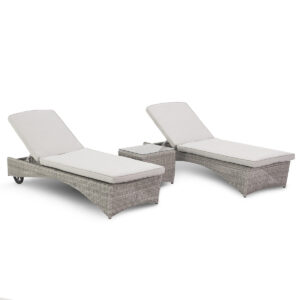Uncategorised
How to Choose the Best Outdoor Furniture for Your Space
Introduction
Stepping into the world of outdoor decor is like stepping into a vast, vibrant universe. Your backyard, patio, or balcony can transform into a haven of tranquility or a bustling hub for gatherings. But, to achieve this, the key lies in understanding how to choose the best outdoor furniture for your space.
This comprehensive guide will arm you with the insights you need to create your perfect outdoor sanctuary. Read on, and let’s unlock the secrets of the outdoor furniture universe!
How to Choose the Best Outdoor Furniture for Your Space
Choosing outdoor furniture isn’t just about picking the most aesthetically pleasing items. It’s an art that calls for a careful balance of practicality and style. So, what should you consider to make the best choice?
Understanding Your Outdoor Space
The first step is to get to grips with your outdoor space. Is it a petite balcony in an urban apartment, or a sprawling backyard in a countryside home? Recognizing the size, layout, and specific needs of your space is crucial in picking the right furniture.
Choosing Furniture That Matches Your Style
Everyone has a unique style. From chic modern designs to rustic, earthy vibes – your outdoor space should be a reflection of your personality. Identifying your preferred aesthetic will guide you in choosing furniture that complements your style.
Practicality and Durability
Outdoor furniture should not only look good, but also stand up to the elements. High-quality, durable materials are a must. So, how do you strike the perfect balance between style and durability? We’ll delve into this in the subsequent sections.
Types of Outdoor Furniture Materials
Outdoor furniture materials play a vital role in the aesthetics and longevity of your pieces. Let’s explore the most common types:
Wood
Wood is a classic choice, offering warmth and a natural aesthetic. However, different types of wood vary in terms of durability and maintenance needs. Teak, for example, is highly resistant to weather conditions, but also requires regular care.
Metal
Metal furniture, including aluminum and wrought iron, is sturdy and long-lasting. While they can withstand various weather conditions, they may need cushions for added comfort.
Plastic
Plastic outdoor furniture is lightweight, affordable, and requires little maintenance. However, it may not offer the same longevity or aesthetic appeal as wood or metal.
Wicker
Wicker furniture provides a charming, rustic appeal. While traditional wicker may not fare well outdoors, synthetic versions are more durable and weather-resistant.
Selecting Outdoor Furniture for Different Spaces
Different outdoor spaces call for distinct types of furniture. Let’s explore some common spaces:
Patio Furniture Selection
Patio spaces are ideal for dining sets and lounge furniture. Consider durable materials like metal or teak, and don’t forget to add some shade with a patio umbrella.
Garden Furniture
Choosing Balcony Furniture
Balconies often have limited space, so folding furniture or stackable chairs are a great option. Bistro sets are also a popular choice for small balconies.
Poolside Furniture
Poolside furniture should be water and sun-resistant. Consider chaise lounges made from materials such as resin wicker or aluminum.
 FAQs
FAQs
Q: What is the best material for outdoor furniture? A: The best material depends on your needs and preferences. Wood offers a natural aesthetic, while metal is durable and long-lasting. Plastic is lightweight and affordable, and wicker provides a rustic appeal.
Q: How to maintain outdoor furniture? A: Maintenance depends on the material. Wooden furniture requires regular oiling or varnishing. Metal pieces may need rust protection, and plastic furniture can be cleaned with soap and water.
Q: How to choose the right size outdoor furniture? A: Consider the size and layout of your space. Ensure there’s enough room to move around comfortably. Use tape to map out the size of potential furniture to visualize how it will fit.
Q: How often should I replace outdoor furniture? A: With proper care and maintenance, good-quality outdoor furniture can last for several years. However, if you notice significant wear and tear, it may be time for a replacement.
Q: Is it okay to mix and match outdoor furniture? A: Absolutely! Mixing and matching furniture can add a unique, personal touch to your outdoor space. Just ensure the pieces complement each other and the overall aesthetic of your space.
Q: Can indoor furniture be used outdoors? A: Generally, indoor furniture isn’t designed to withstand outdoor conditions. However, some indoor pieces made of durable materials can be used outdoors, but they may require additional protective measures.
Conclusion
Choosing the best outdoor furniture for your space is about striking a balance between style, practicality, and comfort. Understand your space, know your style, and don’t compromise on durability. Remember, your outdoor space is an extension of your home, and with the right furniture, it can be your own personal paradise.






















 FAQs
FAQs